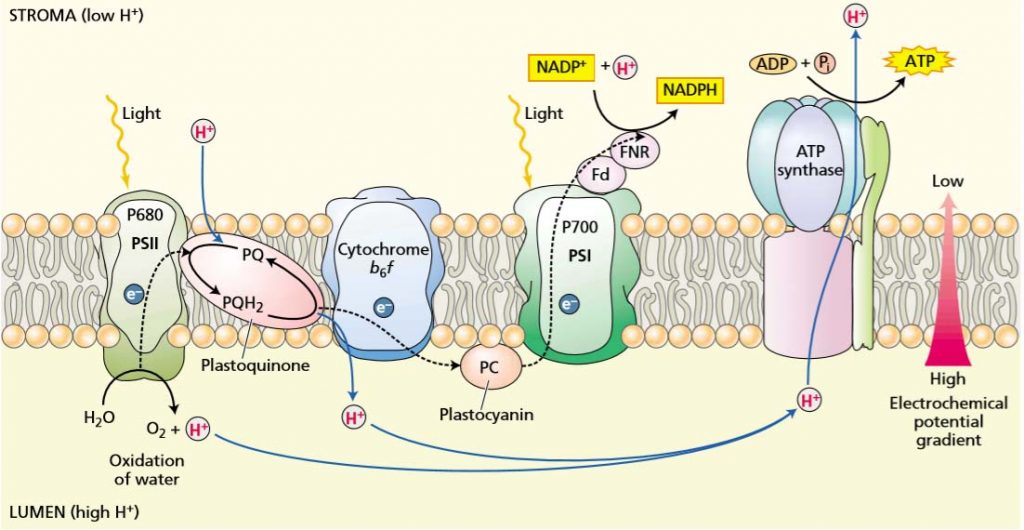Photophosphorylation/ Chemiosmosis. (Peter Mitchell 1961)
The production of ATP in the chloroplast or in other membranes during light reaction is called photophosphorylation. Photophosphorylation occurs in ATP-synthase complex or coupling factor (CF) located in stroma thylakoid membranes. The coupling factor is also responsible for transport of H+ from the thylakoid channel to the stroma.
The electron transfer during photophosphorylation takes place
- Firstly when the quinone of PSII picks up two protons from the stromal side of the membrane and move these to Cyt b6 complex
- Secondly when proton uptake occurs on the periphery of the PS-I complex where NADP+ is reduced to NADPH2.
Concentration of H+ in thylakoid
The concentration of H+ ions in thylakoid channels arise due to oxidation of water and PQH2. During photosynthesis the H+ concentration in the channel (pH 5) to become 1000 times as great as in the stroma (pH 8) when photosynthesis is occurring. This pH gradient across the membrane provides chemical potential energy responsible for driving photophosphorylation.
Thylakoid membranes are quite impermeable to the H+ and other ions except when transported by coupling factor (ATP synthase complex).
ATP synthesis can take place via two-processes: non-cyclic photophosphorylation and cyclic photophosphorylation

i. Non-Cyclic Phosphorylation
In non-cyclic photophosphorylation the electrons removed from water, do not cycle back to the water molecule. The electrons originating in water are passed by PS-II and PS-I to NADP and NADPH2 and ATP are formed together with the evolution of O2.
Cyclic Photophosphorylation
In cyclic photophosphorylation the electron takes a cyclic path from Fd and return to Cyt bf complex. During this phosphorylation ATP is formed but not NADPH2.
- The electron removed from P700 is donated to Fe-S centers and subsequently to ferredoxin, which becomes reduced.
- The ferredoxin instead of transferring its electrons to NADP donates its electron to cyt bf and then through electron transport cycles back to P700.
- The evolution of oxygen does not take place during this flow of electrons
The additional ATP molecules generated during cyclic phosphorylation are used to convert CO2 into complex compounds and other processes in the cell.
